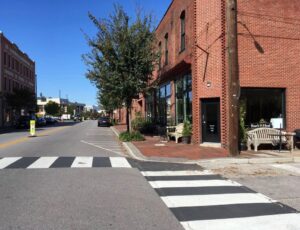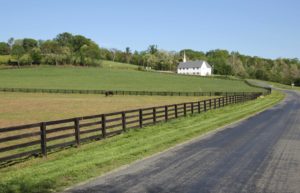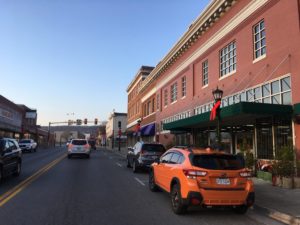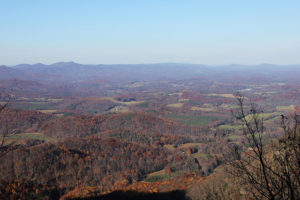Each year, the Virginia Association of Planning District Commissions (VAPDC) holds a training conference to provide regional planners with training opportunities regarding the latest trends and developments in planning. As one might imagine, this year’s conference is online and divided into four parts throughout the month of July. The first session took place this week and was entitled The Other Side of COVID-19: A Futurist’s View, presented by John Martin, of Southeast Institute of Research (SIR). As the title suggests, Mr. Martin looked into his proverbial crystal ball to convey the changes he sees coming for American society, with a specific emphasis on Virginia. In his presentation, Martin focused on the following seven trends, and I will follow up on those which I believe are most relevant to the West Piedmont Planning District:
- Resiliency. The need for communities and individuals to learn to be adaptive, nimble, innovative, and flexible.
- Taking Care. This generally refers to the need for a greater emphasis on quality of life and wellness.
- Valuing All People. This point highlights economic equity, diversity and inclusiveness, particularly with regard to social justice, in the context of communities ensuring that all of their members flourish.
- Increasing Appreciation of Teamwork. This simply means that there will likely be a greater emphasis on teamwork, particularly in the context of more public-private partnerships and regional partnerships.
- Hyper-Connections. This point emphasizes the need for people to belong to a group, team, etc. This desire has likely become more engrained as a result of the isolation caused by COVID-19.
- Getting Local. This highlights the likelihood of a greater interest in local assets that deliver the experience of authenticity, and may include local foods, artisans, and other characteristics that make a place unique.
- Live Here/Work There. This stresses the fact that COVID-19 has accelerated the shift of the American workforce to telework. A likely consequence of this will be greater flexibility in terms of where people will want to live. An effect of this could be Americans leaving some of the larger urban areas and moving to smaller, less dense places offering lower costs of living, relatively mild climates, and positive qualities of life.
During the presentation, I had various thoughts about how the communities of the West Piedmont Planning District might be affected by the trends articulated in these points. In my view, each of these trends could impact our region in some way, but I would like to provide some ideas about opportunities our region can embrace with regard to these potential changes.
- With regard to “Taking Care,” I think we will place a greater emphasis on personal health and well-being in our communities. One example of this may be the greater adoption of active transportation, such as complete streets. Given that bicycling has increased as a mode of transportation during COVID-19 because of its mobility and social distancing benefits, it is likely that this mode may continue to proliferate following the pandemic. Bicycling is also a very cost-effective and fun way to be active. Therefore, greater multi-use trail connections would be beneficial to our region in the future, as well as more comprehensive pedestrian networks in our towns, cities, and village centers.

- With regard to “Team Work,” I believe regionalism may take on an even greater role going forward after COVID-19. For example, projects of regional significance may involve more localities and organizations than just those directly impacted by a project. A locality on one side of our region may see the benefit of a transportation or economic development project on another side of the region, and there may be greater intra-regional collaboration to bring such initiatives to fruition. The West Piedmont Planning District Commission (WPPDC) is a great conveyor of regional collaboration.
- There are great opportunities for “Getting Local” in our region following this pandemic, and one trait of local uniqueness is authenticity. One of our region’s assets is its pastoral landscapes and, with that, the great ability for our region to produce local food. In 2018, the West Piedmont Planning District Commission published Virginia’s West Piedmont Local Food Guide, which serves as an excellent resource to connect residents of our region with local producers. This asset should be further cultivated (pun intended) to yield greater local food sources for our region. This could also feed into the “Taking Care” category noted above, as well as social equity. An aspect of authenticity pertaining to “Getting Local” in our region and tied into the pastoral landscapes is the plethora of places to view these beautiful landscapes on quiet roads from a bicycle. Bicycling past working farms and meadows on a quiet country road not only provides an experience of authenticity, but can also tie into “Taking Care,” described above, because of the effect it can have on our physical and mental well-being. The West Piedmont Regional Bicycle Plan serves as an excellent resource which recommends safe and enjoyable riding networks in the region. Additionally, cyclists choosing to ride to certain locations in our region, or to work, can earn points toward rewards through the RIDE Solutions program (ridesolutions.org).

- The “Hyper-connect” point also presents opportunities for our region. One of the sub-points here is a resurgence of walkable communities to meet the social needs of residents. Many of our region’s communities offer quaint and walkable downtowns which should continue to be cultivated as a regional asset.

- Lastly, I think the “Live Here/Work There” point resonates here in our region, which offers a great quality of life. Our region’s cost of living is low; we have a plethora of outdoor activities, particularly with regard to the Blue Ridge Mountains and Parkway in our backyard; and our region offers close proximity to larger metro areas. Therefore, our region is well-positioned to compete with larger metro areas for residents who may prefer living in more of a rural setting with excellent amenities.



